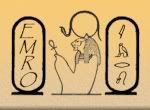by Yoko Ono
Performed at Carnegie Hall
1965
Perhaps Yoko Ono's most famous performance, Cut Piece is consciously or unconsciously laden with meaning. The performance reveals much about women as victims, martyrs, and heroines and reveals much about humanity in terms of authority, violence, and degradation and our willingness to participate in such positions and behaviors.
The performance was as follows:
Yoko sits on stage with a pair of scissors in front of her. It is announced that members of the audience may come on stage one at a time to cut a small piece of her clothing to take with them. She remains motionless throughout the piece. She ends the performance at her discretion.
"In the 1971 paperback edition of her book, Grapefruit, Ono included not so much a score, as a description, concluding with the statement that, "the performer, however, does not have to be a woman."" (1) What sort of affective difference would it make to this performance if the performer was a man? Does it dramatically change the content? These questions and many more spring to mind upon viewing this performance.
Even though the performance took place before feminism exploded as a movement, many critics and other intellectuals have characterized it as such. Yoko Ono said her original inspiration was not feminism but the story of the Buddha renouncing all things worldly and allowing his body to be devoured by a tiger. Artists' intentions aside, most artists will readily admit that the audience is a product of and participant in the surrounding culture; so, what an artist may initially intend may be lost on the audience or evolve into another level or type of content over a span of time.I would argue that this performance has gathered more power and intensity over time and connects more closely to feminist philosophy than it ever has. First, to ask whether it would make a difference in today's audience if the performer who was having their clothing cut was a man, I would say, most definitely, unless he was wearing a military uniform. While women have the capacity to be "Buddha" types, Buddha was male. One can see a stoic, Buddha-like response in Ono as the performance moves on. That's about where the Buddhism stops. Perhaps if she had crossed her legs as in the meditation pose, this point would have been more clear. Instead, she sits "like a lady" with her legs bent and to the side. It is this subtle difference that shifts the content from spiritual to something more earthly: pacifism.
The country was in the early stages of the Vietnam War so one could see in retrospect how this might be the content conveyed. Still, 1965 wasn't the height of protest or conscientious objection. So rather than pacifism as a moral choice, it turns into stereotypical female passivity (just from the shift in her legs and her blank expression). How many women (or men, for that matter) do we all know that almost literally invite people to cut and remove parts of them without the slightest reaction or retaliation? It happens for real, all too often, even in this day and age, after the feminist revolution. So, if she is a passive participant in her own "mutilation" is she a martyr for a higher cause or a victim of cultural violence against her? Furthermore, why are people so willing to go up and cut things from her--some even laughing in the background?
Perhaps Ono's performance represents women, nature, and many other things and individuals that are abused on a daily basis. Maybe she is not every woman as some suggest, but merely the vehicle that represents how mistreated so many people are and nature is. This is not a stretch because women are often intertwined with nature in terms of meaning. Women have cycles like nature, for instance.
I think it's a slippery slope to say that this piece is feminist because it represents a victimized woman (in some minds). Feminism and female victimization are not synonymous; though some see that a woman who is victimized is somehow beatified by the experience and therefore justified to be independent and powerful which is a sad misread of feminism. Women who want to be independent and powerful should be allowed to because it is their right as human beings to choose so and explore their possibilities and live their lives to the fullest. I think there is a feminist element in that she is a woman, but it is not feminist because she does not fight or try to break free. There may even be an accidental connection between the contemporary language and the title of the performance. "Cut" refers to an opening and is one letter shy of a pejorative word for female genitalia. "Piece" is slang for the receiver of sexual intercourse. So, if we look at it through the contemporary vision and language we might find a militant feminist read, once again, showing how time changes interpretation--as art does not exist in a vacuum.
Performance art, more than classic theatre, involves the audience as part of the performance. What's revealed most in this performance is the level of comfort the members of the audience feel in coming up to the performer and cutting pieces of her clothing. Her passivity is disturbing, to be sure, but the audience's aggression is even more so. The man who begins to cut her bodice, even laughs insidiously and says, "this could take some time." One could tell that this moment bothered Ono. 32 years later, after the Vietnam War, Operation Desert Storm, 9-11, the current war in Iraq, other wars all over the globe, genocide, dictatorships, and the tragedy in Darfur (to name a few) we as humans, have not outgrown our aggressive tendencies, but seem rather, to be on a roll with it. Because Ono's audience is so comfortable with cutting pieces of her clothing off, it reveals a microcosm of the larger phenomenon of human aggression. The audience becomes imperialists, colonialists, and fascists (even with her silent consent) over Ono's body. The audience's behavior is a chilling reminder of Stanley Milgram's experiments on authority except that one finds with this performance that people don't need to be given authority, they just need to be given permission.
What makes Cut Piece an Art Classic is its timelessness and multiple interpretations. It's yesterday and today. It's against war. It's about spiritual practice and submission. It's feminist. It's about the environment. It's about victimization and martyrdom. It's pro-human and anti-human. It is simple and complex. It is poetic, disturbing, and beautiful.
© Stephanie Lewis, 2007





1 comment:
Wow! You've made me look at Ono in a different light. I can't say you've made me a fan, but I'm not as anti Yoko Ono as I was.
Post a Comment